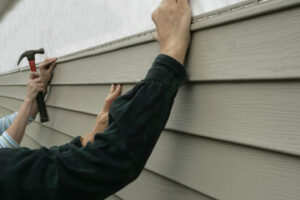Your home’s foundation is what supports the structure of your entire house. When it becomes damaged, your home can shift and become unlevel.

Foundation Repair Nashville includes a variety of solutions to help stabilize your home. Some options are: concrete slab repair, drilled piers, and steel piers. Polyurethane injections are also used.
Cracks in foundations occur for a variety of reasons, including settling, moisture infiltration, soil pressure, and structural issues. They can be minor, such as hairline cracks, or significant, threatening the integrity of the entire structure. Regardless of the cause, it is important to address these cracks promptly to prevent further damage.
If your home has cosmetic cracks that are not accompanied by movement or leaks, they can be sealed with a high quality epoxy resin. This is a quick and relatively inexpensive solution.
Static cracks are a different matter, however. These are cracks that have formed due to the original settlement or movement of your home, but have remained relatively unchanged over time. These cracks should be carefully monitored, as they may widen or grow deeper over time.
While these cracks are not a major concern, they should be sealed to prevent moisture intrusion. If you notice that the cracks are wider or more prominent, a professional evaluation should be conducted to determine whether the issue is a serious one.
When a cracked foundation causes water to leak into the basement, it can result in severe moisture damage and rot that could require costly repairs or even total demolition of the existing structure. If you have a finished basement, the best way to prevent this problem is by sealing any cracks in your foundation walls and installing a gutter system that redirects water away from the home.
If your basement is already leaking, you will need to repair the leaky area and replace any damaged flooring or drywall. It is also a good idea to clear any debris from the cracks, including dirt, dust, and other small particles. It is recommended to use a hammer and chisel to slightly widen the crack and undercut the edges, which will allow for better patch adhesion. Always wear safety glasses, gloves, and a mask when using a hammer or chisel to avoid inhaling any concrete or cement dust. It is also a good idea to have a vacuum cleaner on hand to help clean up any debris that is spilled during the process.
Sealing Cracks
Foundation cracks can be caused by a number of factors, including natural settlement, soil conditions, and changes in the moisture levels of concrete. While vertical and diagonal cracks are not necessarily a sign of major problems, horizontal or wide cracks are a serious issue that needs to be addressed. These cracks often indicate a loss of support under the foundation and may also allow water to leak into the home.
A common method for fixing leaking foundation cracks is patching the cracks with hydraulic cement. This works well for a while, but eventually water will seep in again. This is because the plug created by hydraulic cement does not bond with the concrete and will fluctuate with temperature and moisture, allowing the crack to leak again. A better option for repairing this type of crack is epoxy crack injection. This is a highly effective method for repairing poured concrete foundations and can be performed by a certified professional.
Another way to stop a crack in your foundation from leaking is to use masonry sealer. After the concrete is cured, this waterproof sealant will prevent any water infiltration and protect the integrity of the repaired area.
For more severe cracks that have a significant impact on the structural stability of your home, it is recommended to have these cracks filled by a professional. This will help to reduce the risk of water infiltration and further damage from movement.
Regardless of the cause, it is crucial to be proactive about monitoring cracks and understanding when they require attention. Keeping an eye out for signs of larger issues can save you money and hassle down the road.
If you notice a crack that is getting wider over time, this is usually a sign of a more significant problem that requires immediate attention. If the crack is leaking, this can lead to mold growth, water damage and other potential structural damage in your home. In order to avoid these issues, you should have a foundation repair company perform regular inspections of your home. These companies can spot these issues before they get out of hand and fix them in a timely manner.
Underpinning
If the soil under your foundation becomes weak, it can cause your home to sink. This can happen due to water infiltration, freeze-thaw cycles, poor construction practices, natural disasters like earthquakes, and other factors. In these cases, underpinning is used to lower your building’s footing and transfer its weight to a more stable layer.
If you are looking for a long-term solution to your foundation issues, underpinning is the way to go. Mud-jacking and using polyurethane material are short-term solutions that don’t fix the underlying problem. In contrast, a solid concrete or steel underpinning system will reach deeper into the soil and bedrock, creating a permanent support that won’t shift over time.
Slab foundations need underpinning when the ground underneath them loses its bearing capacity. The most common repair method is to use either helical or push piers, which are driven down through brackets attached to the bottom of your foundation and act as underground stilts that keep your home from sinking. They are a fast and minimally invasive option.
Helical piers, which look similar to giant screws, are turned into the soil until they reach the load-bearing strata, where they are locked in place. They are a good choice for most homes, while push piers are more suitable for lighter structures.
Drilled piers are another popular option for underpinning slab foundations. These are drilled into the bedrock or stable soil beneath your home, where they are then capped with a precast concrete slab that will cover them. They are longer-lasting than push or helical piers and are often more cost effective.
If you’re unsure which option is best for your home, a local foundation repair expert can provide an inspection and quote based on the specific condition of your property. Choose a contractor who is knowledgeable about all of the different methods for home foundation repair, as this will help ensure your house stays protected and secure for years to come.
Repairing Leaks
Getting your foundation repaired is crucial for the health of your home. Even minor cracks can become major problems that compromise the structural integrity of your home and allow water, pests, and mold to enter. Ignoring the problem will only lead to further damage, more costly repairs, and unsafe living conditions.
If you see puddles in your basement after a rainstorm, it’s probably a sign that you have active leaks in the foundation. The good news is, there are a number of solutions that can stop leaks and keep your basement dry.
The most common cause of basement leaks is moisture in the soil around your foundation. When the soil is saturated, it puts pressure on your foundation walls and causes them to crack, allowing water to sneak into your basement. Poor drainage and heavy rainfall are also common culprits. You can minimize the chance of leaks by implementing some simple strategies like sealing cracks, installing a sump pump, and enhancing your yard grading.
For most homeowners, the easiest way to repair a crack in your foundation is by filling it with hydraulic cement or epoxy. These fast-setting materials expand and fill the cracks, creating a waterproof barrier that keeps moisture out. Epoxy is a good choice for smaller cracks, while hydraulic cement works best for large or shifting cracks.
Another common method of repairing cracks in the foundation is to reinforce and re-pile the area. This can be done by adding a concrete slab or by digging down to the level of the original foundation, reinforcing and re-piling it. This is a more invasive and extensive solution than simple patching, but it can be very effective if the problem is extensive or ongoing.
Other methods of repairing cracks in the foundation include the use of wall anchors to stabilize bowing walls and prevent further movement, install drain tiles with a sump pump to divert water away from the basement and control moisture, and exterior french drains to eliminate pooling by channeling water to the rear of your property. Lastly, you can improve your yard grading to slope soil away from the house and promote proper drainage.


